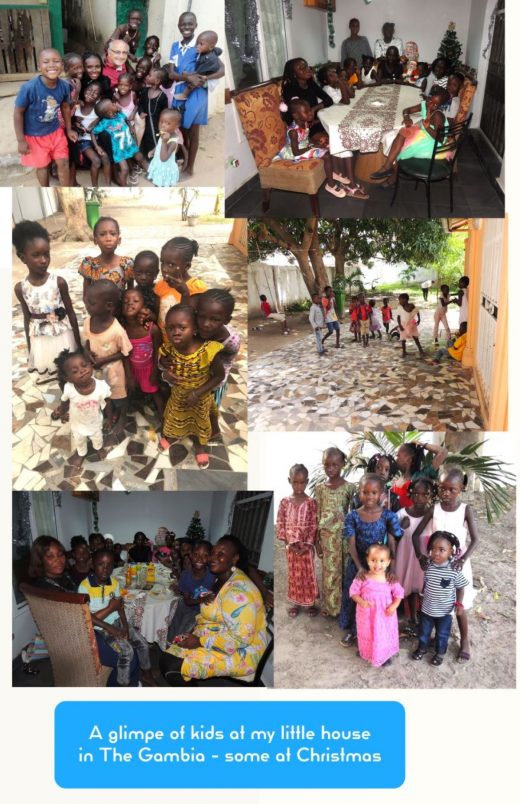
(The picture is from the Lower North Shore of Quebec in the winter. My Colleague Vicki Driscoll arrives at the airport to pick me up as we prepare to travel along the coast to the string of rural communities not connected by a road network. This transportation works well during the winter season)
This was a presentation to an Regional Science Council on Regional Development in Brazil
Introduction:
For over 20 years I have pursued community, economic and sustainable development in peripheral regional communities in Atlantic Canada, North Eastern Scotland and most recently Quebec province in Canada. Each of these regions has gone through some crisis or challenge or has been languishing in the wake of such events. A multitude of programs have been developed providing funding resources and guidance. In all of these areas, there has been a plethora of organizations created and charged with rejuvenation. Some of these have been created by governments, others developed locally, and some are hybrids of both. Most often, though, the cry from these organizations has been the lack of volunteers, the lack of interest by local people and the growing apathy of people to their own plight and subsequently, the plight of the world.
My own observations do not concur with this thesis. My experience would suggest that what is being witnessed are spiritually diminished people lacking the confidence and wherewithal to engage or be engaged in the tasks of building their communities. This task has become ever more complex as a result of the programs, policies and organizational structures developed to assist them. The context of my paper focuses on the necessity to simplify the very processes that supposedly address the challenges evident in the creation of sustainable rural communities.
The Challenge of Community Engagement:
The ever growing complexity of the way our society is organized and governed is one of the greater challenges to rural sustainability. This complexity which leads to marginalization, dependency and often times despair emanates from an organizational framework that no longer fits. The elements of this complexity include:
- Multiple organizational structures
- Those developed by communities to respond to an issue, a problem or an opportunity
- Those developed by local communities, organizations and institutions in response to a funding program
- Those developed by government themselves to redirect or supplement a service
- Those which change very frequently
- Those with rules that change as people find ways to access the funds
- Those that continue even though they no longer apply
- A myriad of funding programs
- Monumental policies, rules and procedures that never seem to be rescinded, just expanded upon. Each amendment and subsequent revision adds further to a complex web through which people have to navigate.
- An ever increasing bureaucratic maze entangling and ensnaring people in their efforts to progress. The result for many is barely survival, much less progress or sustainability.
There appears in many spheres of our society a belief that if people are consolidated into fewer and fewer places, have less and less freedom and if democratic decision making is placed into fewer and fewer hands management and compliance will be easier. The reality is somewhat different. As people become confined and stifled new issues arise. As freedom is restricted, there are more reasons for radicalism. The combination of issues and reaction create the need for greater management schemes and more bureaucracy resulting in unwieldy if not unmanageable institutions where people are disconnected from those who ultimately must be responsible and responsive. Politicians, the traditional democratic link between people, community and government appear completely bewildered at this complexity even though they partially assisted in its creation.
I wish to place this complexity into context with examples and lessons from three distinct areas in which my work in community development has taken me.
First and foremost there is the Atlantic Provinces of Canada comprised of four provinces, Newfoundland, Nova Scotia, Prince Edward Island and New Brunswick. This area, in particular Newfoundland, has been the focus of much of my early work. The plight of these provinces, being a peripheral region of Canada, has been one of difficult choices and detrimental impositions. In the case of Nova Scotia, the roots of their current dilemma can be traced back to a time just after the formation of Canada. Prior to the confederation of regions that established Canada, this province was one of the most vibrant economies in North America. Within twenty-five years, its status was diminished, its economy marginalized and its history has been one of “have not” comparable to that of its three neighbors.
But what I wish to share is a more recent historic example. The complexity just mentioned was at play in the methodology of government response to the closure of the Atlantic Fishery in 1992 which created an economic and social crisis in all four provinces. This historic fishery suffered an almost complete moratorium on cod fishing and the curtailment of fishing many other species making up the ground fisheries. My assignment at the time as Director of Community Development for the major Canadian Government Development Agency in the Atlantic Region provided an interesting window on both the crisis and government response.
Although statistics, scientists and fisher folk recognized the catastrophe at hand several years went by before the decree of closure was proclaimed. There appeared to be a collective denial, even perhaps an unwillingness to recognize the reality which was imminent. This was partially fueled by political maneuvering to make it appear that all was under control by government. From my own perch at the agency, which began in 1990, the issues and concerns had been identified. Yet, information was kept well away from the people to be most affected. Any suggestion within the bureaucracy that people in fishing communities should be told the facts, made aware of information and acclimatized to what was happening, was met with total resistance. Officials seemed to be totally aghast at the thought of bringing people into their web of knowledge.
The response, when it became no longer sustainable to keep “news” away from people, was to envelope them in a web of policy, complexity and funding that allowed policy makers to deflect away from the real issue of how to sustain local communities through a time of crisis – a crisis not dissimilar than historically most communities would have endured.
The intervention, by government when it came, was the allocation of huge sums of money to be applied to the areas most affected (somewhere in the range of $5 Billion over the next six or more years). Of course, the money had strings, conditions and constraints. One report suggested that “people’s lives have become a mishmash of government acronyms -NCARP, TAGS, SEC, HABS and a pile of red tape. They know more about appeals and bureaucracy than ever before. The frustrations of having to deal with a government program where the rules change daily, where training components vary depending on the day of the week and where threats of being cut off are a regular occurrence, are overwhelming for most people who are also trying to find ways to ensure their communities survive this most difficult time”.
Ultimately the fishers and fish plant workers were not the primary recipients of the aid which went to those involved in consultancies, training and a myriad of business schemes (scams). The incomes that people did receive so exaggerated their reality it encouraged people to purchase and no doubt incur debt unlike their normal lifestyle. Funding programs were curtailed not long after their implementation with payments and benefits declining over time leaving people with another crisis as funds were exhausted. The results of this external intervention led to mass outward migration and further marginalization in communities struggling on their own with depleted populations and resources to shape a future.
One community, in which I worked, Trepassey, was the beneficiary of twenty nine million dollars in development and training funds. It wasn’t until 1998 that people in the community realized the damage that was being caused by this money with its external direction and limitations. By this time, the population had dwindled from 1600 to 800, the money had been all but depleted or returned to government and the growing sense of despair was taking its toll. Only then did some community leaders take it upon themselves to bring people together in a community process to establish their own plan. They began by looking within themselves and within their community for the resources that might be their salvation. Sustainability, they realized was not going to come from a government distant from their plight and perhaps even more distant from their reality. They understood that it had to come from themselves.
They might have benefited from an article written several years earlier by another similarly ravaged community in Nova Scotia that had received the same government assistance. The headline decried “Even twenty-five million dollars couldn’t bring back the fish”. The article went on to say that the government intervention of money only helped to repress the spirit of the people because now they had no hope. The people were aware that they had their bailout and wouldn’t receive another.
This type of government assistance can be traced back many years in this area of Canada each time areas are affected by declining natural resources or changing economies. The response appears to be more detrimental that the crisis to which it was intended to respond because it wraps people in a cloak of false and very temporary security while entangling them in a web of constraint. Discouragement and dependency are the usual results. The ultimate outcome leads to out-migration, dying communities and disillusioned people (even those who leave) with diminished spirits and little hope. Assistance is necessary; it is the complexity around this assistance that impedes.
My work in the eastern provinces of Canada afforded me opportunity to work in Scotland when I was asked to assist in an initiative designed to build capacity in the communities of the North East. The city of Aberdeen and its rural environs had been suffering the combined impacts of the development and now declining oil industry, impending changes to farming and fishing economies and National Government policy that had literally wiped away traditional local governments.
In the 1970s, local community and borough councils were replaced by large regional councils which, with time, became so large and unwieldy they were further restructured in the mid 1990s. These councils were so remote from their small communities that services were severely, and in some case, diminished to the point of becoming non-existent. Community Councils which had been initiated as part of the first regional councils in the 1970s had neither power, finance nor relevance. One such council with whom I worked in a small town of Sandhaven ran a monthly lottery where councilors went door to door collecting a nominal sum from each resident. The prize was one half the take, the other half went towards community facilities such as playground equipment.
The challenge of building local capacity was the mandate of the initiative in which I became involved with in 1995. The initiative evolved from a realization by certain officials that if they were to return some of their responsibilities back to the community, there had to local ability and organizational capacity to take on these responsibilities.
In the ensuing years from the initial changes in local government, there had been attempts both within the Regional Councils and by the National Government to build internal and external organizations to “service” local communities. The proliferation of such organizational structures and their complexity over this twenty year period only added to the feeling of helplessness by local people of ever being able to engage in their community’s development much less its preservation. The cry from most of these local entities was of apathy and unwillingness by people to be involved in community activities. My experience was different. Most of the communities in which I worked, and there were many, responded with intelligence, energy and initiative. Several even have developed web sites portraying their community’s assets and pointing to their successes.
Sandhaven, one of the communities just mentioned, holds a special place with me. When they approached me, they were struggling with a derelict harbor owned by a Laird (landowner) who was unwilling to invest or divest. In fact, he was practically unwilling to discuss the issue. Over a period of three years, they found not only the courage to approach and negotiate with this gentleman but raised twenty thousand pounds to purchase the harbor (this in a community of 800). They are now in the process of rebuilding it and just launched a website to celebrate.
The reality of what officials and local organization employees called apathy was really something much different. With engagement, a little guidance and support came involvement and doing – the real basis of sustainable communities.
In 1999, a new opportunity arose for me in Quebec, Canada. Here, this province had undergone a significant transformation since the early 1970s. An eruption of English-French tensions resulted in a renewed French community but a disenfranchised, marginalized and resentful English speaking population. Quebec provincial governments, many promoting separation from Canada, furthered marginalized English speakers with a myriad of laws and decrees.
English speaking people fit into varied community formats providing a window of exposure on a full gambit of communities through multi ethic urban, sub-urban middle class, rural through to rural remote. In all these communities besides language issues, people have to contend with the current economic, social and political trends happening everywhere.
The challenges have been similar. While the provincial government policies have created marginalization for the English communities through their policies and programs, this has also created a complex web of organizational structures catering mainly to the French community. The Canadian government response (in support of English communities) with its cadre of programs and funding mechanisms has created a base of organizational, institutional and community dependency similar to other areas. In order to survive, these organizational and institutional structures have twisted and turned to adapt to policies and programs to a point where their original mandates and goals have long been forgotten.
The main challenge that has been experienced by our fledgling organization, other than community motivation and mobilization, has been solid resistance by the established English institutions and organizations. So dependent are they on government largesse they fear any efforts for community renewal by new organizations and in many cases even the communities themselves. They obviously see it as a challenge to their dominant positions and a threat to their seemingly secure funding sources. Our own organization is also learning the lesson of government dependency as the Department that funds us is encouraging other government departments and private interests to support our funding requirements.
The other universal challenge has been the government itself with its myriad departments and agencies, each vying for recognition and competing for control. Little consideration is given to the people (for whom they work) as they create policies, programs and responses to crisis. The short term response and knee jerk reactions make it practically impossible to create community strength and long term initiatives that lead to sustainable communities.
This was most evident in my most recent activity, working with a small English Quebec community being impacted by yet another fisheries curtailment. In order to be heard people participated in a quiet protest by occupying several government offices. This did bring financial relief to people who were destitute. However, it was very short term and carried the usual controls and constraints. My young colleague and I were requested to participate in the “training” people were required to undergo in order to qualify for three weeks benefit. Our window was to be three days while adult education officials readied the ‘real’ training that these people were to have.
Our community capacity building exercise, whereby people looked within themselves and their communities for resources and opportunity encouraged them to reject what was on offer by adult education in favor of continuing their “planning”. A further threat of protest by these people opened a window for a further two week exercise providing at least some hope and further appreciation that they need to take charge for themselves if their communities are to be sustainable. Through this exercise, people were able to shape some direction for their community. This is a small step, maybe, but one that caused Canadian Government officials to rethink, if only temporarily, their approach to crisis response in this one community.
Quebec, as with the other areas, has the same positive elements as the others that can provide sustainability. There are local people ready for change, willing to take responsibility and now beginning to challenge government.
Conclusion
The intent of this paper is, through my own experiences and stories, to draw attention to the ever increasing complexities created by institutions, governments, and organizations around people. This complexity, endemic in our society is the result of a way of thinking now practically universal to all developed countries – “That in today’s world perception is reality and facts are negotiable” was the way one learned speaker at a conference described this way of thinking.
These perceptions span the spectrum of economic, social, political and spiritual. There is expanded economic growth yet rising numbers of people without gainful or reasonable employment. There is increasing wealth yet growing homelessness and deeply entrenched poverty. There are more democratic governments than ever before in history but people have less and less ability to influence the very policies that ultimately effect them. The “facts” are made relevant to the issue at hand or to appease which ever vested interest has the most influence.
The perception is that sustainability is impossible perhaps only a dream. Yet, for sustainability of communities to become a “fact”, it requires engagement, understanding and involvement by people. They must have appreciation for the full capabilities of an environmental system that has endured through millions of years and catastrophes that can not even be imagined much less recorded. People must have a belief, not only in their own abilities, but also in the institutions that represent and support them.
Environment sustainability is a fact; the perception that people control it is the myth that needs attention. Human sustainability is another issue. If we continue to build the complexity that is becoming more and more evident in our societies, human sustainability or should I say the lack of it will be a fact as well. With more and more people struggling for survival, human sustainability may become a distant if not an unachievable goal. The demystification of democratic governance, whereby people put themselves at the heart of decision making would be a major step towards sustainable people living in sustainable communities. The complexity of the systems being created to assist or appease people rests like the universe, in creating a balance. Ultimately, balance will prevail even in the societies, communities and systems which we create.


